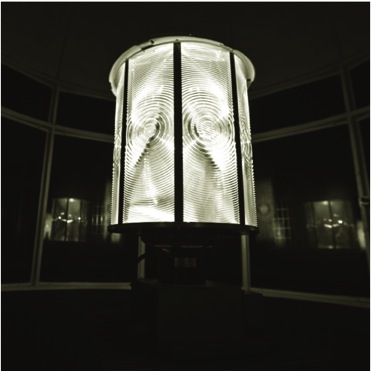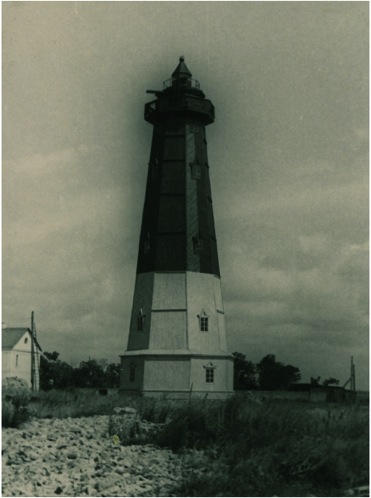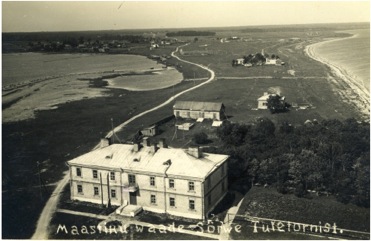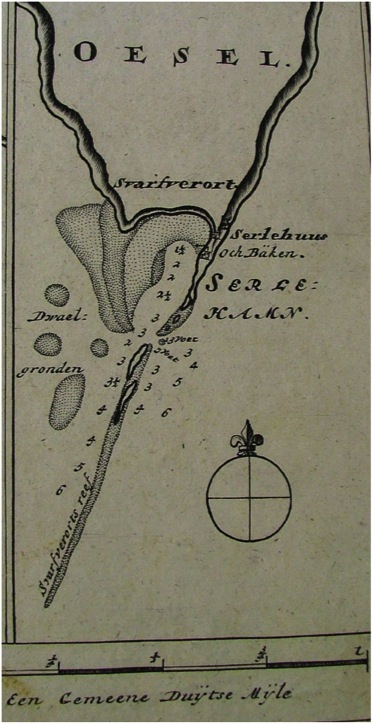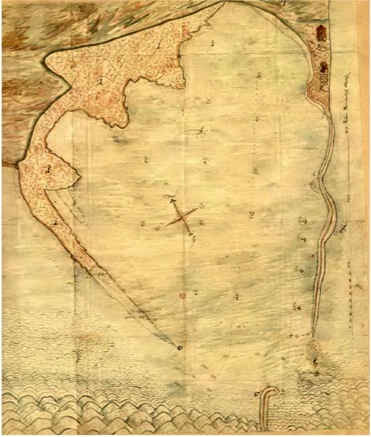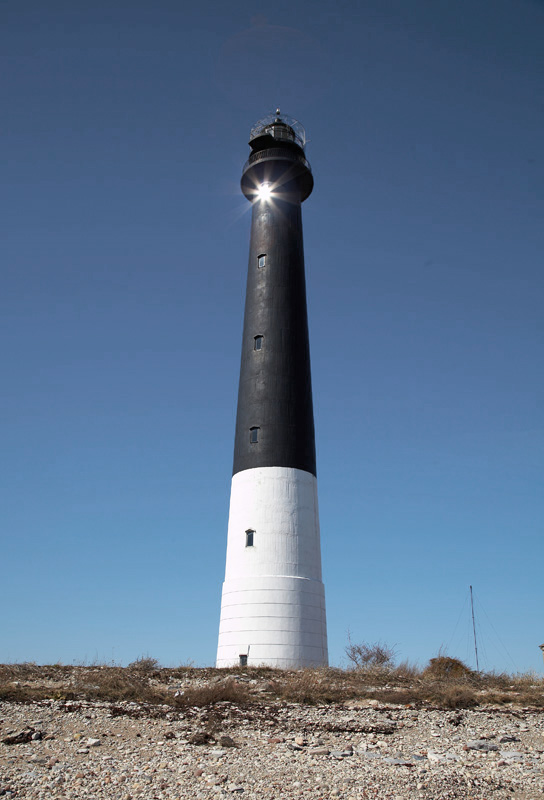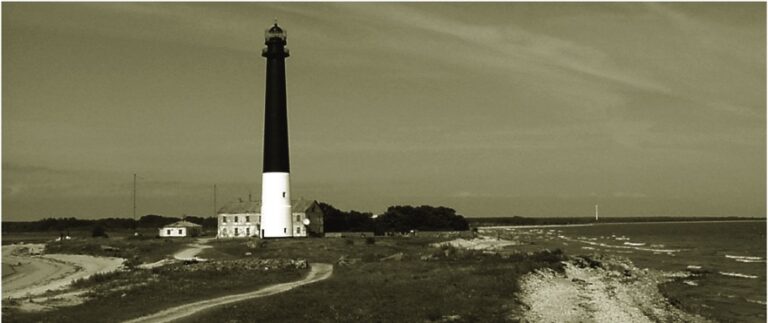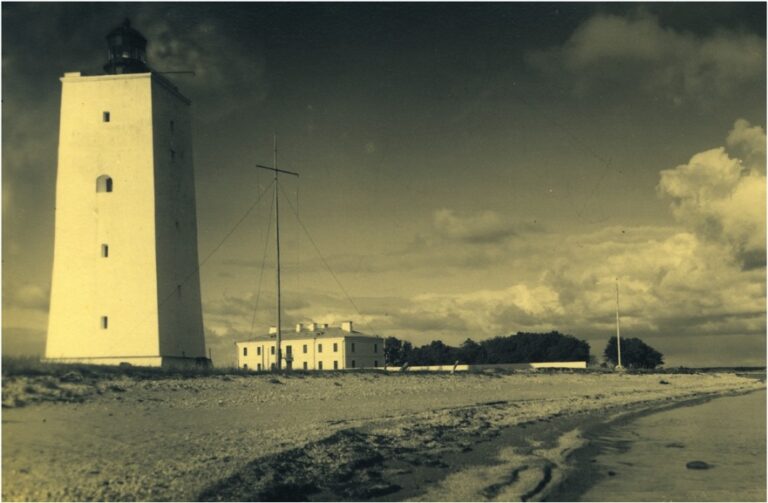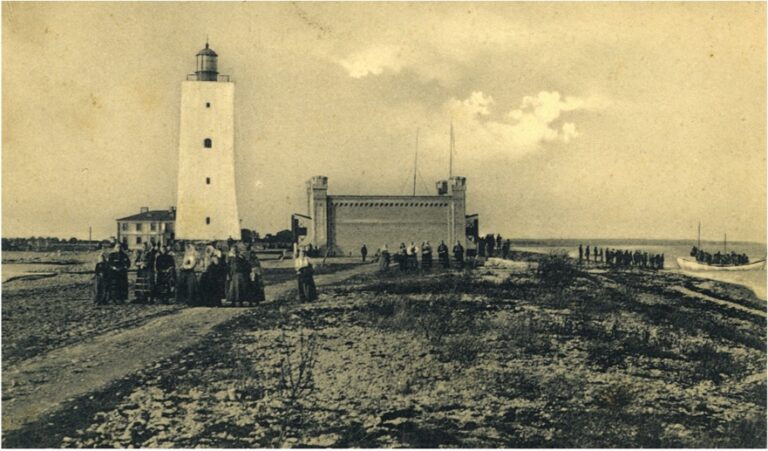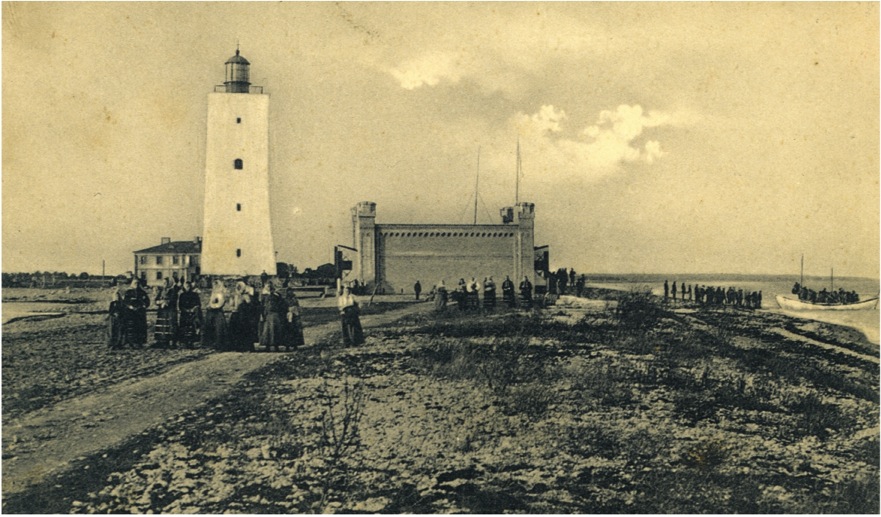
The lighthouse is located on the southern tip of the Saaremaa Island in Sõrve (Zerel, Sworbe, Swalferort) and is one of the most important on the western coast of Estonia, helping ships navigate the Kura Strait surrounded by shallows.
Already in 1645, Dutch sailors traveling between Riga drew the attention of the Governor-General of Livonia, Gabriel Oxenstierna, to the need for building a lighthouse on the Sõrve Peninsula. In the autumn of 1646, under the leadership of Dutch fortification engineer Johann Rodenburg, the construction of a lighthouse on a small island at the tip of Sõrve Peninsula began. The lighthouse was a wooden structure with a lifting beam to raise the fire basket. At one end, there was a counterweight, and at the other end, a metal basket with the flame. Later that same autumn, the lighthouse was disassembled and reinstalled on higher ground at the tip of the peninsula, as the island was often flooded by the sea.
Heinrich Stegeling, a Riga citizen and former merchant, was appointed as the inspector of the Sõrve Peninsula and Ruhnu Island lighthouses. In the summer of 1649, a contract was signed between the Kammerkollegium and Stegeling, defining the rights and responsibilities of the inspector. According to the contract, he was responsible for supplying the lighthouses with coal and firewood, maintaining the necessary tools and equipment, lighting the light in the lighthouse before darkness and keeping it on until dawn. The inspector was responsible for ensuring that no ship ran aground due to his or his people's negligence. Stegeling received an annual stipend of 2,500 state thalers from the Riga license inspector for organizing the operation of the lighthouses.
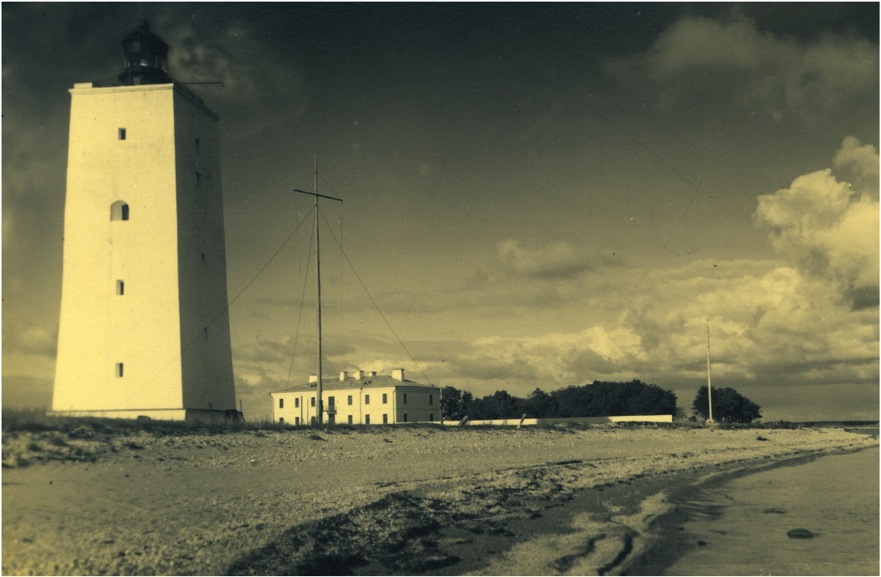
In 1650, the original wooden lighthouse was replaced with a stone structure designed by Heinrich Stegeling. It was about 30 feet tall with a square base and a diameter of three fathoms. In 1663, Heinrich Stegeling was elevated to nobility for his work, and a year later, he obtained royal privileges from King Karl XI, granting him the Torgu manor.
In 1737, Sõrve Lighthouse was nationalized. A ship from the Baltic Sea fleet was assigned to supply the lighthouses with firewood and coal. Lighthouse overseers were appointed from ship captains, and sailors served as their assistants. The old four-tiered stone lighthouse was reconstructed in 1770, and the height of the light above sea level became 50 feet (about 15 meters).
In 1807, the lighthouse was built to a height of 110 feet (about 34 meters), with the light height above sea level at 114.5 feet (about 35 meters) and a visibility range of 17 miles. The lantern room at the top was equipped with catoptric lights facing the horizon. Another lantern was positioned at a height of 50 feet, directing light toward the Kura Strait. These two lights allowed ships to estimate their distance from the coast and avoid the shallows around the Sõrve Peninsula.
In 1863, the lighting apparatus was transferred to a temporary wooden lighthouse, the old lighthouse was reconstructed, and the old lighting equipment was restored. In addition to the existing sauna and barn, a two-story stone dwelling was built. In 1860, a rescue station was established next to the lighthouse. In 1882, the lighthouse was converted to petroleum lighting.
In 1891, a first-order rotating dioptric light was installed in the new lantern room of the 37-meter tall lighthouse, with the light height above sea level at 36 meters and a visibility range of 13 miles. The lantern room contained a five-wick petroleum lamp. By 1914, the light's visibility had increased to 17 miles.
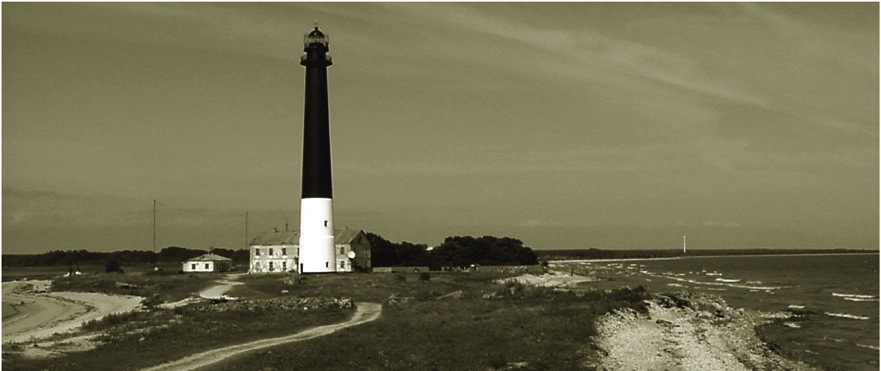
In 1917, during the First World War, Sõrve Lighthouse burned out from the inside. The walls also suffered from artillery fire, and the brick rescue station building was destroyed. In the early 1920s, the lighthouse was restored to its previous height, and a new wooden boathouse for the rescue station was built. The acetylene lamp was obtained from the AGA company in Sweden. By 1936, the light's visibility had increased to 16 miles. In 1930, Sõrve Lighthouse, along with 14 other important lighthouses and 6 fog signals, was transferred to the Maritime Communications of the Republic of Estonia. Maritime Communications' task was to monitor all ship and aircraft traffic and maintain communication with their naval vessels.
Sõrve's stone lighthouse and rescue station were destroyed during World War II in 1944. In 1949, a temporary 38-meter tall eight-sided conical wooden lighthouse was completed, equipped with a sector light. The light height above sea level was 37 meters, and the visibility range was 18 miles.
In 1960, a new slender 52-meter tall conical reinforced concrete lighthouse was completed, making it one of the tallest in Estonia. The lantern room was equipped with a rotating light operated by diesel generators and batteries. The light height above sea level was 52 meters, with a visibility range of 19 miles. Until 2000, a powerful rotating light, visible up to 30 miles away, operated in the lighthouse. Today, Sõrve Lighthouse has an 8-lens rotating lantern by Tideland Signal Ltd, making one rotation every two minutes. The lantern's visibility range is 22 miles. From the service buildings, the preserved ones include a dwelling, a cellar, and a sauna from the mid-19th century, and generator and storage buildings from the second half of the 20th century. South of the lighthouse, by the sea, the ruins of the former rescue station slip can be seen.
